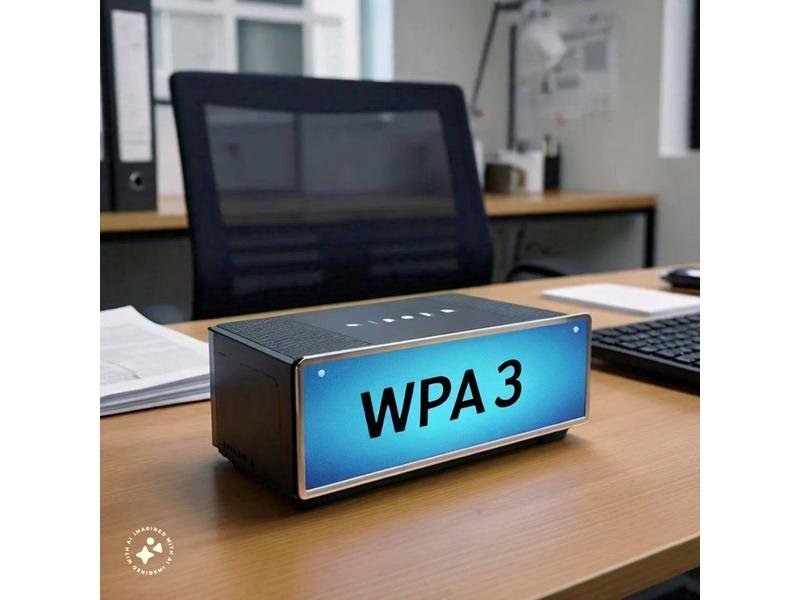Implementing Secure Wi-Fi Practices in SME: Ensuring Your Wireless Networks Are Safe from Intruders
In today’s technology dependent business world, Wi-Fi has become as essential as electricity for businesses. It’s the invisible force that powers our connections, collaborations, and communications. However, just as a power outage can halt business operations, an unsecured Wi-Fi network can expose your business to significant risks. For Small and Medium-sized Enterprises (SMEs) in North America, understanding and implementing secure Wi-Fi practices is not just beneficial—it’s imperative.
What is Wi-Fi?
Wi-Fi, short for Wireless Fidelity, enables wireless network connectivity, allowing employees and customers to access the internet and share data conveniently. Wi-Fi is a technology that uses radio waves to provide network connectivity. Wi-Fi stands as a cornerstone of modern communication, providing wireless access to the internet to virtually any device (such as computers, smartphones, and tablets, etc. to connect to the internet). However, its accessibility also makes it a potential target for cybercriminals. An Unsecured Wi-Fi is like an unlock door, for any unwanted guest.
The Critical Need for Secure Wi-Fi in SMEs
For SMEs, where resources are often limited, a breach in Wi-Fi security can be disastrous. Unsecured Wi-Fi networks are susceptible to numerous threats, including eavesdropping, unauthorized access, and data theft. North American SMEs, in particular, face stringent penalties under various compliance regimes for breaches that expose sensitive customer data. By securing Wi-Fi networks, SMEs not only protect their business data but also build trust with their customers, ensuring compliance with industry regulations.
Benefits of Secure Wi-Fi Practices
Protection of Sensitive Data: Customer information, financial records, proprietary data – all of these are at risk on an unsecured network.
Regulatory Compliance: Many industries have specific regulations regarding data protection. Failing to meet these standards can result in fines and legal action.
Prevention of Cyberattacks: Unsecured Wi-Fi makes your SME an easy target for hackers who can exploit vulnerabilities to steal data, install malware, or disrupt operations.
Maintaining Customer Trust: A security breach can erode customer confidence, making it harder to attract and retain clients.
Key Practices for Secure Wi-Fi
WPA3 Encryption: This is the latest and most secure encryption protocol for Wi-Fi. It scrambles your data, making it unreadable to anyone without the correct password. WPA3, offers cutting-edge security features that guard against brute-force attacks and ensure data privacy over wireless networks. Transitioning from older standards like WPA2 to WPA3 provides an enhanced level of security that is especially critical for businesses handling sensitive information.

Strong, Unique Passwords: Your Wi-Fi password is your first line of defense. Use a complex combination of characters and change it regularly.
SSID Management: Your SSID (Service Set Identifier) is your network’s name. Hide it from broadcasting to make it harder for unauthorized users to find. Managing your SSID effectively involves disabling SSID broadcasting to make your network less visible to malicious actors and configuring separate SSIDs for guest and internal network access, thereby adding an extra layer of security.
Virtual Private Networks (VPNs): VPNs create an encrypted tunnel for your data, especially crucial when employees access your network remotely. Virtual Private Networks (VPNs) are crucial for securing remote access to your business network. By routing all traffic through encrypted tunnels, VPNs prevent attackers from snooping on your online activities and capturing sensitive data transmitted over the internet.
Regular Updates: Keep your router’s firmware up-to-date to patch security vulnerabilities.

Employee Training: Educate your staff about safe Wi-Fi practices, like avoiding public Wi-Fi for sensitive work and recognizing phishing attempts.
Regulatory Requirements and Common Threats
In North America, SMEs must adhere to regulations such as GDPR (General Data Protection Regulation) , HIPAA (Health Insurance Portability and Accountability Act) , or CCPA (California Consumer Privacy Act), depending on the nature of the data they handle. These regulations often mandate specific security measures to protect consumer data. Compliance with such regulations is crucial to avoid hefty fines and legal consequences.
Additionally, SMEs should be aware of common Wi-Fi threats such as ‘Evil Twin’ attacks, where attackers mimic a legitimate Wi-Fi network to capture information from unwitting users, and ‘Man-in-the-Middle’ attacks, which intercept and alter data in transit, or Wi-Fi spoofing, where an attacker sets up a rogue Wi-Fi network to lure unsuspecting users. Educating employees about these threats and implementing security awareness training programs can significantly minimize the risk of successful attacks.
Technical Implementation
While implementing secure Wi-Fi practices may seem daunting, it is vital for SMEs to prioritize network security. The technical setup of these security measures involves configuring network hardware and software to meet security standards. This process might require professional IT skills, especially for more complex configurations like VPNs. However, the investment in proper setup and ongoing management of secure Wi-Fi practices pays off by significantly reducing the risk of cyber threats.

Case Study 1: Retail SME – A small retail business experienced frequent data breaches until they upgraded their Wi-Fi security to WPA3 and implemented dual SSIDs for customer and internal use. This change not only secured their data but also enhanced customer trust, leading to an increase in loyalty and sales.
Case Study 2: Health Clinic – A health clinic in Toronto implemented a VPN for its staff to use while accessing patient records remotely. This adjustment met compliance requirements for patient data protection and mitigated the risk of data breaches, maintaining the clinic’s reputation and operational integrity.
Fun Facts About Wi-Fi Security, Did you Know?
- The first wireless networks were actually called “WaveLAN“?
- Over 30% of Wi-Fi networks are still running older, less secure protocols, making them easy targets for cybercriminals.
- The world’s longest Wi-Fi connection was established in Venezuela, spanning over 200 miles!
- The use of WPA3 encryption can make it exponentially more challenging for hackers to crack your Wi-Fi network password?
Conclusion – Secure Your Wi-Fi, Secure Your Business
It is crucial for SMEs to stay informed about relevant regulatory requirements and common threats to ensure compliance and maintain a robust security posture. Don’t wait until it’s too late. The steps to secure your Wi-Fi are relatively simple and inexpensive compared to the potential fallout from a breach. If you’re ready to take the next step in protecting your SME, book a consultation session today. Our experts can help you assess your current security posture and implement the best practices for your specific needs.
Let’s make your Wi-Fi a fortress, not an open invitation.
Remember, in the battle for business security, the best offense is a good defense.

